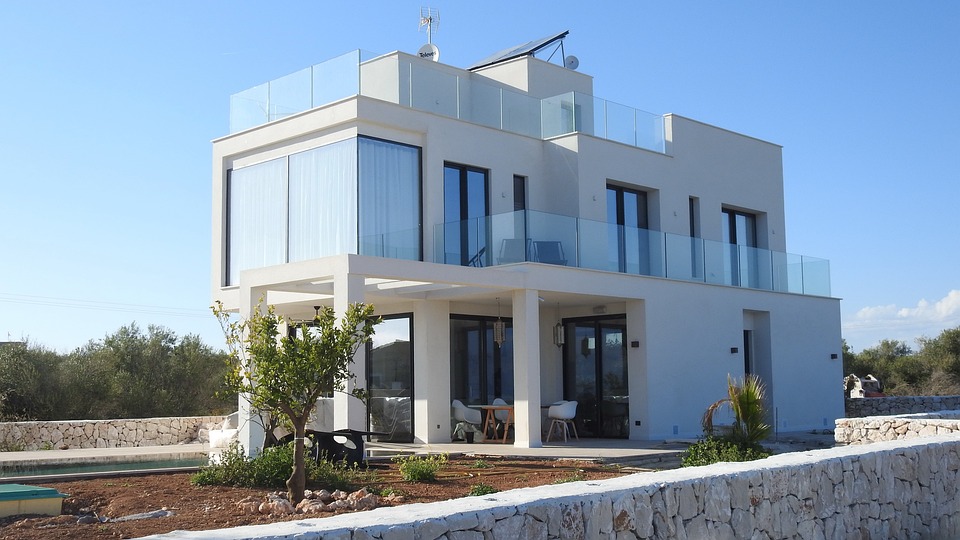
Profit Margins on Typical Home Sales Nationwide Decrease to 55 Percent; Returns Slip Downward as Median U.S. Home Price Slumps 4 percent;
IRVINE, Calif., April 25, 2024 /PRNewswire/ — ATTOM, a leading curator of land, property, and real estate data, today released its first-quarter 2024 U.S. Home Sales Report, which shows that profit margins on median-priced single-family home and condo sales in the United States decreased to 55.3 percent in the first quarter – the smallest level in more than two years.
The decline in typical profit margins, from 57.1 percent in the fourth quarter of 2023 and from 56.5 percent a year ago, came as the median nationwide home price went down quarterly by 4.3 percent, to $330,000.
While prices often fall back during the slower Winter home-selling season each year, the latest decrease marked one of the largest quarterly declines over the past 10 years. At the same time, investment returns for sellers decreased for the second straight quarter after several increases last year, hitting the low point since mid-2021.
Still, even as seller returns slipped, they remained higher than during most of the housing market boom that has continued throughout the nation over the past decade. The same was true in the early months of 2024 for the typical $120,500 gross profit on typical home sales across the country.
“The latest price and profit numbers show notably downward trends, which raises new questions about whether the housing-market boom is indeed ebbing, or even ending, after so many years of improvement,” said Rob Barber, CEO for ATTOM. “But due caution is needed in looking at the first-quarter data and what the patterns mean. We saw a similar downward pattern from late 2022 into early 2023, and then the market surged. Plus, profits and profit margins still are very high by historical measures. Amid all that, the Spring buying season will be a huge barometer for whether the market still has steam in its engine.”
The drop-off in prices and profits comes as a mix of powerful forces is putting both upward and downward pressure on the U.S. housing market.
On the upside, historically low supplies of homes could push prices higher this Spring as buyers compete for a relatively small stock of properties for sale. The recent surge in the stock market also helps by providing more resources for down payments. At the same time, though, mortgage rates have crept back above 7 percent for a 30-year fixed loan and inflation remains near 4 percent. Those factors are pushing up ownership costs during a time when home affordability already is a stretch for average workers across the country, according to a separate ATTOM analysis.
Profit margins decline quarterly and annually in more than half the country
Typical profit margins – the percent difference between median purchase and resale prices – decreased from the fourth quarter of 2023 to the first quarter of 2024 in 89 (66 percent) of the 134 metropolitan statistical areas around the U.S. with sufficient data to analyze. They also were down annually in 71, or 53 percent, of those metros.
That happened as median first-quarter home prices declined more, or went up less, compared to changes that recent sellers were seeing when they originally bought their homes. Those trends, from the point of purchase to the point of resale, translated into lower profit margins in a majority of the country.
Metro areas were included if they had sufficient data and at least 1,000 single-family home and condo sales in the first quarter of 2024.
The biggest year-over-year decreases in typical profit margins came in the metro areas of Lake Havasu City, AZ (margin down from 102.4 percent in the first quarter of 2023 to 76.3 percent in the first quarter of 2024); Naples, FL (down from 88.4 percent to 62.9 percent); Hilo, HI (down from 82.3 percent to 57.8 percent); Crestview–Fort Walton Beach, FL (down from 68 percent to 47.3 percent) and Port St. Luce, FL (down from 92.8 percent to 72.3 percent).
The biggest annual profit-margin decreases in metro areas with a population of at least 1 million in the first quarter of 2024 were in Honolulu, HI (return down from 57.2 percent to 41.3 percent); Birmingham, AL (down from 36.5 percent to 21.7 percent); Austin, TX (down from 49.3 percent to 37.5 percent); San Antonio, TX (down from 35 percent to 25.7 percent) and Salt Lake City, UT (down from 50.7 percent to 42.2 percent).
Typical profit margins increased annually in 63 of the 134 metro areas analyzed (47 percent). The biggest annual improvements were in Peoria, IL (margin up from 32.6 percent in the first quarter of 2023 to 52.8 percent in the first quarter of 2024); Scranton, PA (up from 88.1 percent to 106.5 percent); Oxnard, CA (up from 55.1 percent to 71.2 percent); Rochester, NY (up from 50.4 percent to 65.2 percent) and San Jose, CA (up from 85.8 percent to 100 percent).
Aside from Rochester and San Jose, the largest annual increases in profit margins among metro areas with a population of at least 1 million came in San Diego, CA (up from 65.3 percent to 73.8 percent); Tucson, AZ (up from 49.8 percent to 57.4 percent) and New York, NY (up from 55.7 percent to 62.7 percent).
Prices down quarterly in most of nation although still up annually
Nationwide, the median price of single-family homes and condos declined quarterly to $330,000, down from $345,000 in the fourth quarter of 2023 (a record hit several times over the past two years). The typical home sale decreased quarterly in 112 (84 percent) of the 134 metro areas around the country with enough data to analyze,
However, latest median prices remained 3.1 percent higher than the $320,000 level in the first quarter of 2023, rising annually in 103 of the metros reviewed (77 percent).
Metro areas with the biggest decreases in median home prices from the fourth quarter of 2023 to the first quarter of 2024 were Pittsburgh, PA (down 11.5 percent); Flint, MI (down 10.7 percent); Memphis, TN (down 10.7 percent); Birmingham, AL (down 10.2 percent) and Montgomery, AL (down 9.7 percent).
Aside from Pittsburgh, Memphis and Birmingham, the largest quarterly median-price decreases in metro areas with a population of at least 1 million were in St. Louis, MO (down 8.1 percent) and Indianapolis, IN (down 7.4 percent).
Metro areas with a population of at least 1 million where the median home price remained up most from the first quarter of last year to the same period this year were Rochester, NY (up 13.2 percent); Hartford, CT (up 12.2 percent); Cincinnati, OH (up 8.9 percent); Providence, RI (up 8.8 percent) and San Jose, CA (up 8.5 percent).
Historical Median Home Sales Prices
Homeownership tenure down slightly
Homeowners who sold in the first quarter of 2024 had owned their homes an average of 7.77 years. That was down from 7.88 years in the fourth quarter of 2023, but up from 7.44 years in the first quarter of 2023.
Average tenure was up from the first quarter of 2023 to the same period this year in 73 percent of metro areas with sufficient data. The largest annual increases were in Redding, CA (tenure up 23 percent); Santa Cruz, CA (up 17 percent); Yakima, WA (up 13 percent); Oxnard, CA (up 13 percent) and Jacksonville, FL (up 13 percent).
The longest 40 average tenures among sellers in the first quarter of 2024 were again in the Northeast or West regions of the U.S. They were led by Barnstable, MA (13.2 years); New Haven, CT (13.06 years); Bridgeport, CT (12.99 years); Santa Cruz, CA (12.94 years) and Oxnard, CA (12.36 years).
Average U.S. Homeownership Tenure
The smallest average tenures among first-quarter sellers were in Provo, UT (6.33 years); Panama City, FL (6.57 years); Austin, TX (6.59 years); San Antonio, TX (6.6 years) and Chattanooga, TN (6.61 years).
Lender-owned foreclosures inch upward but remain low
Home sales following foreclosures by banks and other lenders represented just 1.7 percent, or one of every 59 U.S. single-family home and condo sales in the first quarter of 2024. That was up from 1.5 percent in the fourth quarter of 2023, but unchanged from 1.7 percent in the first quarter of last year. The latest figure remained just a tiny fraction of the 30.1 percent peak this century hit in early 2009 during the aftermath of the Great Recession of 2007.
Among metropolitan statistical areas with a population of 200,000 or more and sufficient data to analyze, those areas where REO sales represented the largest portion of all sales in the first quarter of 2024 included Peoria, IL (9.6 percent, or one in 10 sales); Davenport, IA (7.7 percent); Warner Robins, GA (6.2 percent); Macon, GA (5.9 percent) and Baton Rouge, LA (5.3 percent).
Cash sales show small increase
Nationwide, all-cash purchases accounted for 41.1 percent of single-family home and condo sales in the first quarter of 2024. That was up slightly from 40.7 percent in the fourth quarter of 2023 and from 39.7 percent in the first quarter of last year.
“Cash-sale levels barely moved in the early months of 2024, but the portion could easily rise given the recent increase in mortgage rates,” Barber said. “Higher rates mean higher costs, which provides more incentive for buyers who can afford it to forego mortgages in favor of all-cash deals.”
Among metropolitan statistical areas with a population of 200,000 or more and sufficient data to analyze, those where cash sales represented the largest share of all transactions in the first quarter of 2024 included Birmingham, AL (70.1 percent of all sales); Claremont–Lebanon, NH (69.8 percent); Macon, GA (64.7 percent); Naples, FL (63.7 percent) and Youngstown, OH (61.7 percent).
Those where cash sales represented the smallest share of all transactions in the first quarter of 2024 included Greeley, CO (14 percent); Charleston, WV (20 percent); Bremerton, WA (21.4 percent); Boulder, CO (22.2 percent) and Cedar Rapids, IA (23 percent).
Institutional investment unchanged
Institutional investors nationwide accounted for 6.2 percent, or one of every 16 single-family home and condo purchases in the first quarter of 2024. That was unchanged from the fourth quarter of 2023, although slightly down from 6.4 percent in the first quarter of last year.
Among states with enough data to analyze, those with the largest percentages of sales to institutional investors in the first quarter of 2024 included Tennessee (9.4 percent of all sales), Alabama (9.2 percent), Indiana (8.7 percent), Kansas (8.5 percent) and Oklahoma (8.4 percent).
States with the smallest levels of sales to institutional investors in the first quarter of 2024 included Rhode Island (2.5 percent), New Hampshire (2.9 percent), Maine (2.9 percent), Massachusetts (3.6 percent) and New York (3.6 percent).
FHA-financed purchases also remain at same level
Nationwide, buyers using Federal Housing Administration (FHA) loans comprised 8.7 percent of all single-family home and condo purchases in the first quarter of 2024 (one of every 11). That was the same portion as in fourth quarter of 2023 although up a small amount from 8.3 percent a year earlier.
Among metropolitan statistical areas with a population of 200,000 or more and sufficient data to analyze, those with the highest levels of sales to FHA purchasers in the first quarter of 2024 included Merced, CA (25.6 percent of all sales); Bakersfield, CA (22.5 percent); Lakeland, FL (22.2 percent); Visalia, CA (21.3 percent) and Charleston, WV (18.9 percent).
Report methodology
The ATTOM U.S. Home Sales Report provides percentages of REO sales and all sales that are sold to institutional investors and cash buyers, at the state and metropolitan statistical area. Data is also available at the county and zip code level, upon request. The data is derived from recorded sales deeds, foreclosure filings and loan data. Statistics for previous quarters are revised when each new report is issued as more deed data becomes available.
Definitions
All-cash purchase: sale where no loan is recorded at the time of sale and where ATTOM has coverage of loan data.
Homeownership tenure: for a given market and given quarter, the average time between the most recent sale date and the previous sale date, expressed in years.
Home seller price gains: the difference between the median sales price of homes in a given market in a given quarter and the median sales price of the previous sale of those same homes, expressed both in a dollar amount and as a percentage of the previous median sales price.
Institutional investor purchases: residential property sales to non-lending entities that purchased at least 10 properties in a calendar year.
REO sale: a sale of a property that occurs while the property is actively bank owned (REO).
About ATTOM
ATTOM provides premium property data to power products that improve transparency, innovation, efficiency, and disruption in a data-driven economy. ATTOM multi-sources property tax, deed, mortgage, foreclosure, environmental risk, natural hazard, and neighborhood data for more than 155 million U.S. residential and commercial properties covering 99 percent of the nation’s population. A rigorous data management process involving more than 20 steps validates, standardizes, and enhances the real estate data collected by ATTOM, assigning each property record with a persistent, unique ID — the ATTOM ID. The 30TB ATTOM Data Warehouse fuels innovation in many industries including mortgage, real estate, insurance, marketing, government and more through flexible data delivery solutions that include ATTOM Cloud, bulk file licenses, property data APIs, real estate market trends, property navigator and more. Also, introducing our newest innovative solution, making property data more readily accessible and optimized for AI applications– AI-Ready Solutions.
Media Contact:
Megan Hunt
[email protected]
Data and Report Licensing:
949.502.8313
[email protected]
SOURCE ATTOM
Originally published at https://www.prnewswire.com/news-releases/profits-for-us-home-sellers-decline-again-in-first-quarter-of-2024-as-prices-fall-302126894.html
Images courtesy of https://pixabay.com




